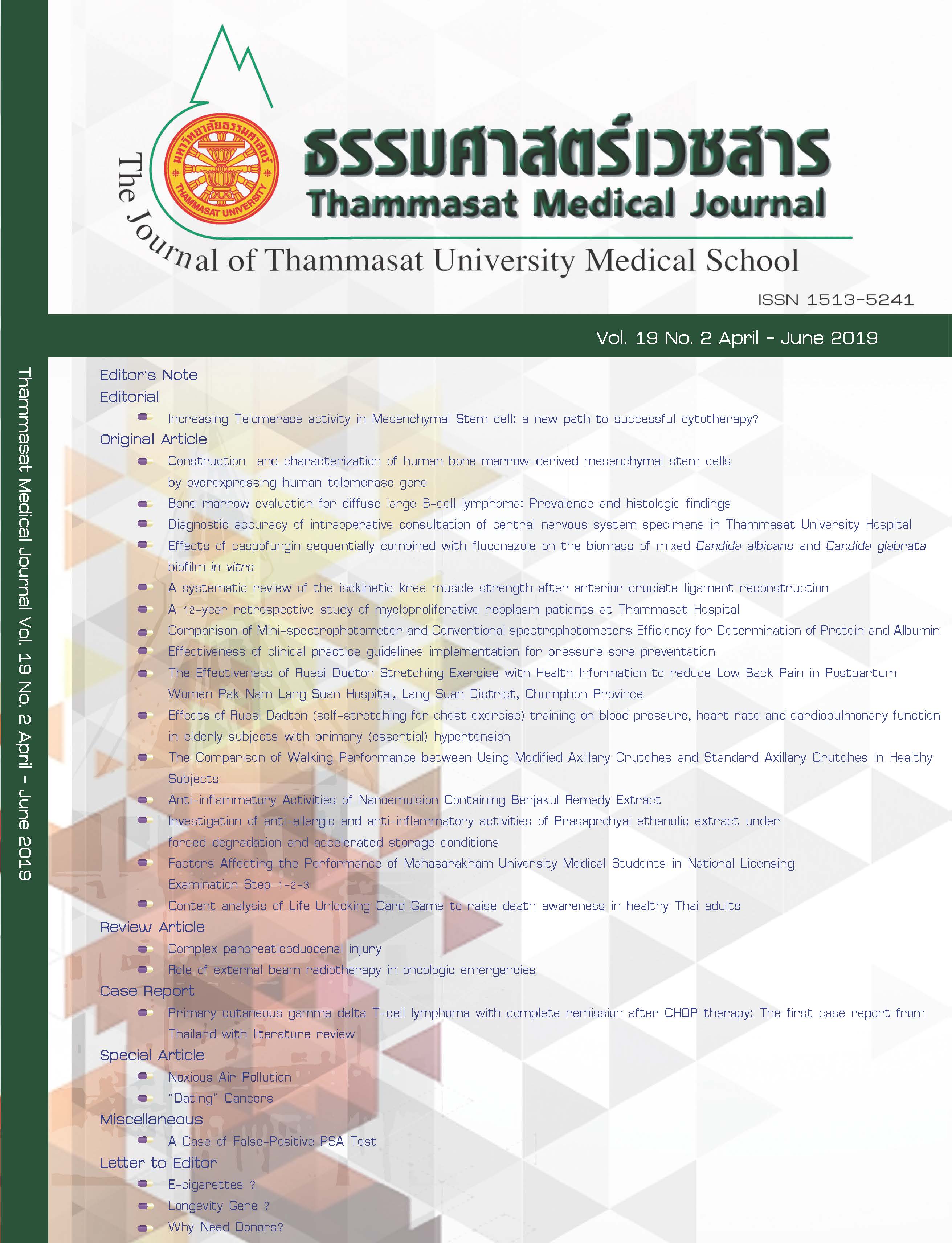Construction and characterization of human bone marrow-derived mesenchymal stem cells by overexpressing human telomerase gene
Keywords:
human mesenchymal stem cells, bone marrow, telomeraseAbstract
Introduction: Currently, bone marrow-derived human mesenchymal stem cells (BM-hMSCs) have been considered a standard source of hMSCs for research and clinical applications. However, the number of BM-hMSCs in bone marrow decline with age and the isolated BM-hMSCs have limited proliferative capacity which are major hurdles for most research and clinical uses which require large number of cells, therefore development of the novel technique for enhancing BM-hMSC expansion in culture is critical.
Methods: This study, the genetic-engineering technique was employed to enhance the expression level of human telomerase gene (hTERT) in BM-hMSCs (hTERT-BM-hMSCs). The hTERT-BM-hMSCs were characterized in term of their morphology, gene expression profile, as well as their osteogenic and adipogenic differentiation potentials in comparison to the non-transfected BM-hMSCs (NT-BM-hMSCs)
Results: The hTERT-BM-hMSCs could be expanded in culture for a longer period of time compared with their non-transfected counterparts and retained the typical characteristics and properties of BM-hMSCs, such as morphology, surface marker expression profile, adipogenic and osteogenic differentiation capacity.
Conclusion: The hTERT overexpression enhanced the expansion potential of BM-hMSCs without altering their properties. The hTERT-BM-hMSCs established in this study is beneficial for genetically manipulation of BM-hMSCs which is usually difficult to perform due to their limited proliferative capability.



